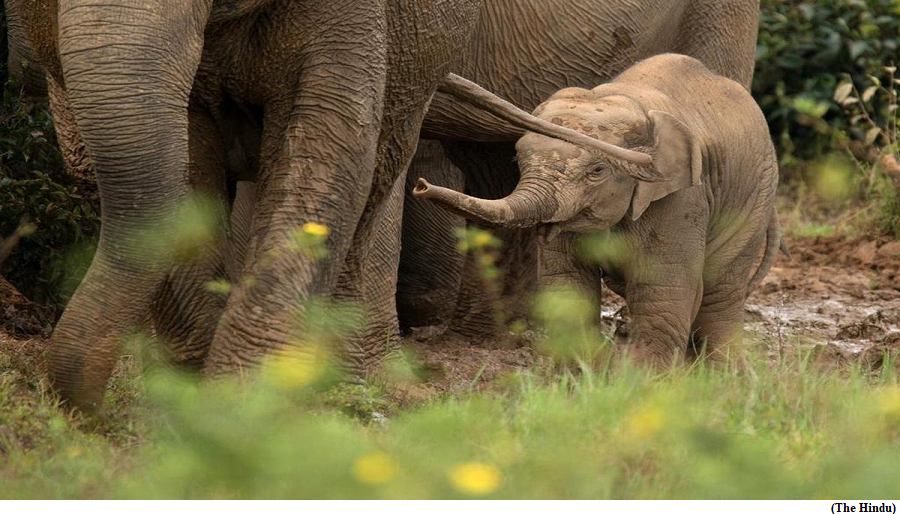Invasive weed threatens elephant habitats in T.N. (GS Paper 3, Environment)

Why in news?
- An aquatic weed native to some countries in Central and South America, including Peru, is threatening elephant habitats and foraging areas in Valparai.
- It is a Tamil Nadu hill station close to the Kerala boundary, and reviving the risk of human-elephant conflicts in the region.
Details:
- Ludwigia peruviana, which grows fast along waterbodies, has infested the majority of the hill station’s swamps, locally known as vayals, where elephants used to find lush grass even in the summer.
- However, most of these swamps are located on private estates, which are responsible for the tricky process of removing the weed; if not done correctly, trying to pull it out will help it spread even more.
Threat:
- The rapid large-scale spread of the weed, which was probably introduced as an ornamental plant for its tiny yellow flowers has shaken the balance of these perennial foraging grounds, limiting the growth of grass and native plants that are palatable to elephants and animals including gaur.
About Invasive species:
- Invasive species are also known with different other names like alien species, non-native species, non-regional species or exotic species.
- Most often they are considered harmful to the area they arrive in. These intruder organisms alternate habitats, cause loss of biodiversity and take the native species to extinction.
Genomic data throw light on demise of Copper Age
(GS Paper 3, Science and Technology)
Why in news?
- An analysis of ancient human genomic data suggests that Copper Age farmers and steppe pastoralists may have interacted 1,000 years earlier than previously thought.

Background:
- Previous analyses of ancient genomic data have suggested that two major genetic turnover events occurred in Western Eurasia; one associated with the spread of farming around 7,000-6,000 BC and a second resulting from the expansion of pastoralist groups from the Eurasian steppe starting around 3,300 BC.
- The period between these two events, the Copper Age, was characterized by a new economy based on metallurgy, wheel and wagon transportation, and horse domestication.
- But what happened between the demise of Copper Age settlements (around 4,250 BC) and the expansion of pastoralists is not well understood.
Basis of research:
- The researchers analysed genetic data from 135 ancient individuals, dating to between 5,400 and 2,400 BC, from eight sites across southeastern Europe and the northwestern Black Sea region.
- While there was genetic continuity between the Neolithic and Copper Age groups, from around 4500 BC groups from the northwestern Black Sea region carried varying amounts of ancestry from Copper Age and steppe-zone populations.
Key findings:
- This finding shows that the groups had cultural contact and mixed nearly 1,000 years earlier. The transfer of technology between farmers and transitional hunters from different geographical zones was integral to the rise, formation and expansion of pastoralist groups around 3300 BC.
- The early admixture during the Eneolithic appears to be local to the NW Black Sea region of the fourth millennium BC and did not affect the hinterland in southeastern Europe.
Way Forward:
- The findings may aid understanding of the demise of the Copper Age and the expansion of pastoralist groups around 3,300 BC.



